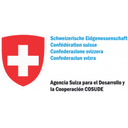Executive Secretary

10th International Scientific Conference on Agricultural Development and SustainabilityAGROCENTRO 2023
Agrocentro 2021
The work aimed at of developing two shows of regression that enable the esteem of the apparent density as from the gravity humidity and the resistance to the penetration in a Vertisol Crómico in an area of Investigaciones's Provincial Station, of Holguín's Sugar Cane. ( natural pasture, sugar cane and secondary forest ) three guys of sampling in each one became established under three uses of the land; Agregándose a tenth point at the boundary between the two last mentioned uses. Determined him the apparent density, the gravity humidity and the resistance to penetration, to three depths 0-10, 10-20 and 20-30 cm. A regression analysis with the apparent density ( dependent variable ) and the gravity humidity and the resistance were accomplished to the penetration as from the odd signs ( independent variables in each case ). The equal signs were used to validate the shows of intervening regression index statisticians ( half an error, the quadratic half an error's root, index of efficiency Nash Sutcliffe, index of concordance and coefficient of confidence ). Relations were linear ( apparent density vs. gravity humidity, refusal, and apparent density vs. resistance to penetration, positive print ). The estadístic and the statistical indicators of the two regression equations indicate that the apparent density can be estimated as from the gravity humidity and the resistance to penetration.
El trabajo tuvo como objetivo de desarrollar dos funciones de regresión que permitan la estimación de la densidad aparente a partir de la humedad gravimétrica y la resistencia a la penetración en un Vertisol Crómico, en un área de la Estación Provincial de Investigaciones de la Caña de Azúcar de Holguín. Bajo tres usos de la tierra (pasto natural, caña de azúcar y bosque secundario) se establecieron tres puntos de muestreo en cada uno; agregándose un décimo punto en el lindero entre los dos últimos usos mencionados. Se determinó la densidad aparente, la humedad gravimétrica y la resistencia a la penetración, a tres profundidades 0-10, 10-20 y 20-30 cm. A partir de las muestras impares se realizó un análisis de regresión con la densidad aparente (variable dependiente) y la humedad gravimétrica y la resistencia a la penetración (variables independientes en cada caso). Las muestras pares fueron utilizadas para validar las funciones de regresión mediante índices estadísticos (error medio, raíz del error cuadrático medio, índice de eficiencia Nash-Sutcliffe, índice de concordancia y coeficiente de confianza). Las relaciones fueron lineales (densidad aparente vs. humedad gravimétrica, negativa, y densidad aparente vs. resistencia a la penetración, positiva). Los estadígrafos y los indicadores estadísticos de las dos ecuaciones de regresión señalan que la densidad aparente puede ser estimada a partir de la humedad gravimétrica y la resistencia a la penetración.
About The Speaker

Alberto Rodriguez Rubio


